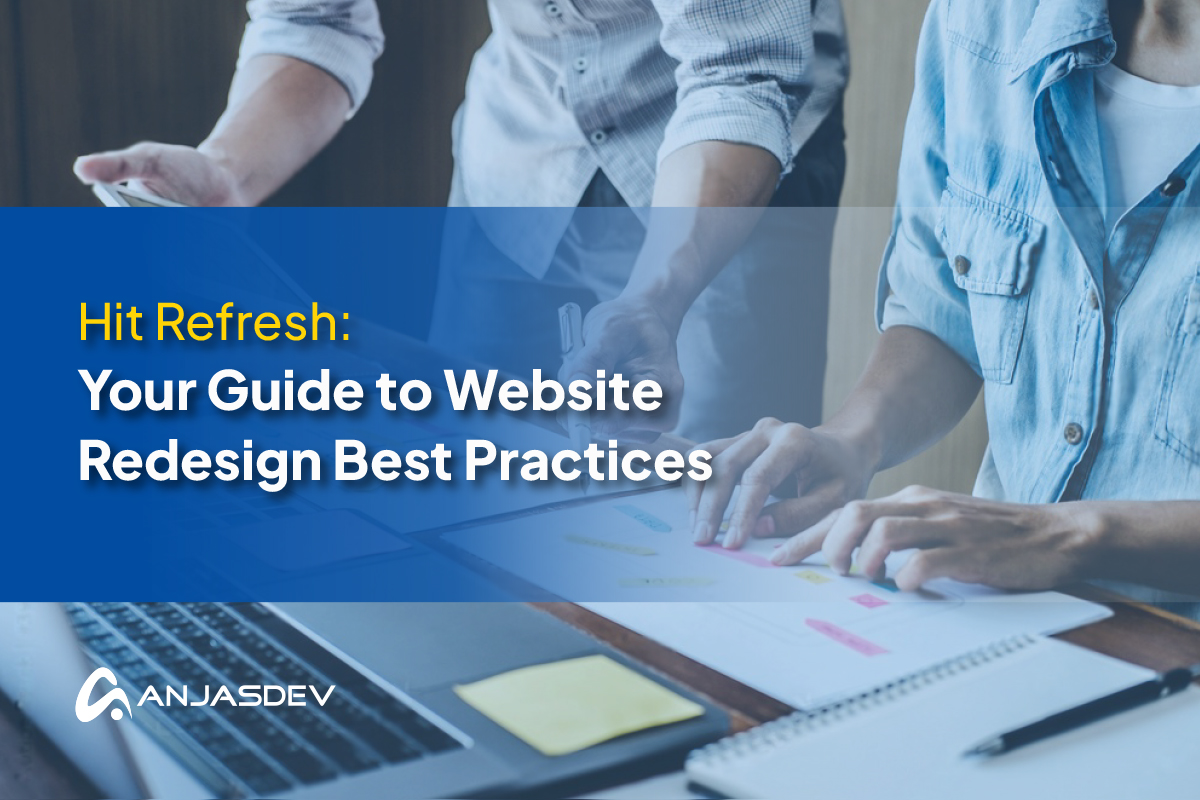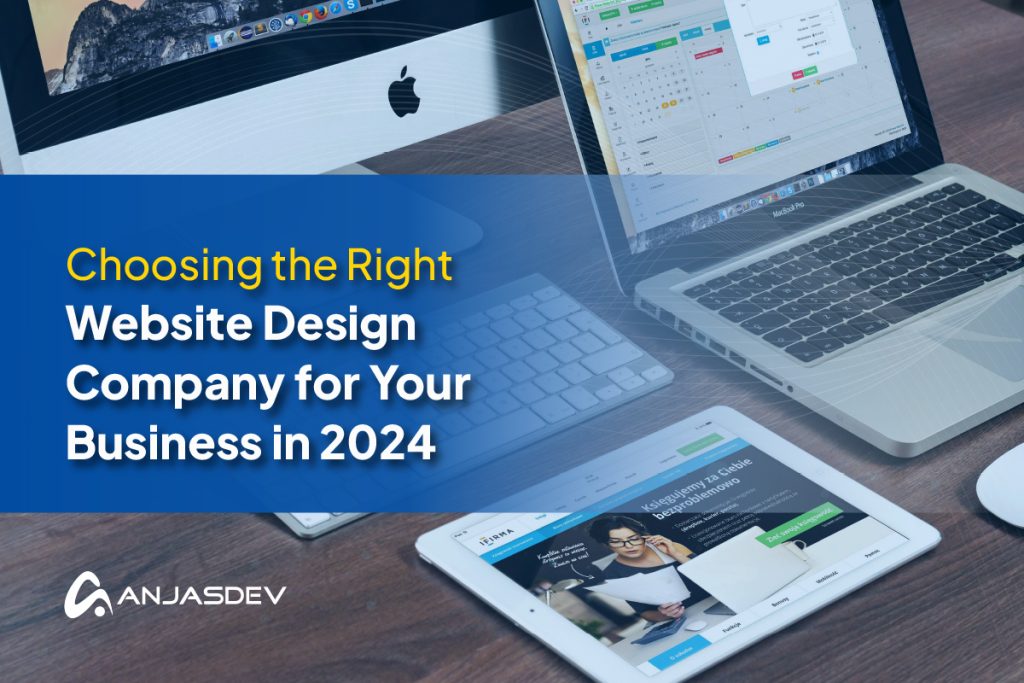Having an up-to-date website that perfectly aligns with the needs of your potential customers is essential if you want to succeed online. Over time, websites can become old and tired, lacking some features that could help increase engagement and custom. Learning website redesign best practices and implementing and updating them regularly is non-negotiable if you want to ensure consistent traffic and conversions.
With 94% of people’s first impressions of your online brand being forged by your website design and 90% of users quickly leaving sites with poor website designs, there’s no better time to give your website a shape-up with a custom website design.
Websites with poor accessibility and user experience also rank poorly in Google’s search algorithms, meaning your website can cost you business and visibility.
We’ll look at web redesign best practices to get your site looking and performing amazingly.
Defining Your Goals and Objectives
Significant website redesign starts with a clear plan of action. Here are some things you should implement and consider for your website redesign best practices before you get underway.
Identifying the reasons for the redesign
One of the first questions you will want to ask yourself is why you are undertaking the website redesign. This will remind you of your purpose and ensure you can set objectives and targets that align with your vision. Some of the things that might be on your website redesign checklist are:
- Improving user experience to improve engagement and reduce bounce-back rates.
- Enhancing brand identity gives potential customers a clear message and builds overall trust.
- Keeping up with technological advancements by updating old pieces of code and embedding new technologies to enhance performance and loading times.
- Website design for SEO purposes, optimizing keywords and content for greater relevance and visibility on search engines.
- Boosting conversions and sales by looking at the purchase journey through your website and optimizing to user needs and intent.
Setting clear and measurable goals
Once you have decided what you want to work on as part of your redesign, you’ll want to set SMART targets to allow you to assess how successful your redesign has been against your objectives. For example, for each of the redesign reasons, a good metric for success could be:
- Increasing website traffic: a year-on-year increase of 200% or an increase of target demographic by x%
- Reducing bounce rates: reaching the Google benchmark of 26-40% across 3 months
- Improving engagement metrics: increase time spent on the website by x%, or increase internal clickthroughs by x%
- Enhancing conversion rates: measured by overall sales numbers, average consumer spend, or increasing conversion percentages by a monthly amount.
Again, these are just examples. You should be sure to choose SMART targets that perfectly align with your individual business needs and requirements, including any specificity related to your industry.
Gathering feedback
Gaining opinions and feedback on your current site can also help you identify improvement areas and is one of our top website redesign best practices. By conducting user research and surveys, you will gain valuable feedback that is genuinely customer-focused. In addition, performing a full audit and analyzing your website analytics, user data, and behavior will show you areas where you can improve.
If you find it challenging to devise a game plan for your website redesign, look no further than AnjasDev. Highly experienced in custom website redesign and with a comprehensive website design portfolio, we’re on hand to set you and your business on the path to success with data-driven plans, insights, and implementation.
Planning and Research Phase
Once you know what you want to target, you can start formulating your attack plan.
Conducting a comprehensive website audit
Conducting a complete and detailed website audit is essential to website redesign best practices when revamping websites. This will allow you to see what areas of your website are working well and what needs work. You should assess content quality and relevance, including SEO performance, on a page-by-page level but also look at the website holistically. Assess your site structure and navigation, and perform technical checks to determine baseline loading times and accessibility.
This may help illuminate additional targets or areas of focus that may otherwise have gone unnoticed but also allow you to prioritize the most critical factors of your website redesign.
Researching industry trends and best practices
When you know what you want to focus on, you’ll start researching how to achieve your goals effectively. Consider looking at recent design trends and see what works well in terms of user experience and as a good fit for your business. An excellent way to do this is to look at what competitors and industry leaders are doing in your sector. The goal is not to copy them outright but to look for certain standard features and things that they do well and could be replicated in your redesign.
Keep your finger on the pulse regarding new technologies and features you could embed into your website, including interactive elements to boost user engagement and experience.
Developing a content strategy
Great quality content is one of the best ways to ensure your website’s visibility on search engine results. Understanding the content you already have, its effectiveness, and any potential gaps in the content will allow you to create a strategy that will ultimately increase traffic to your site.
Establishing a short-term and long-term content creation and optimization plan will help reinforce your website’s overall relevance to consumers. Part of this involves creating a robust content governance model to ensure that all new content meets high standards and relevant objectives before publishing.
Design and User Experience
People are more likely to judge a book by its cover, meaning that the first few seconds they spend on your website are all the more crucial. Creating an attractive yet user-friendly design is critical for setting your brand’s message, keeping users engaged, and reducing bounce rates.
Establishing a consistent brand identity
Your brand may already have a particular look, or it could use a freshen-up. Creating consistent brand guidelines, including specific colors, fonts, and graphical and image styles, will help create a cohesive look that builds trust and familiarity.
It’s best to stick to one or two colors as part of our scheme to avoid overwhelming the consumer, for example, different shades of blue or blue as the primary color, with orange as a contrast for minor details. Using a random color picker might help you draw inspiration, which you can refine into a cohesive color scheme.
Make sure that this color and aesthetic redesign is replicated on all platforms where your brand is featured, including social media and in any images or graphics posted.
Designing for optimal user experience
Designing for optimal user experience involves incorporating user-centered design principles, ensuring intuitive navigation and information architecture. Users should easily be able to navigate through your site even if it is the first time they have visited, so think carefully about how your site is laid out. Consider testing designs with those unfamiliar with your site to gain a fresh perspective, especially as you can often become blind to issues from working on and with it for so long!
Look at optimizing load times and ensuring your site is compatible with mobile devices, including ensuring text and content are easy to scroll and digest on a smaller screen.
Prioritizing accessibility and inclusivity, in line with standards like the web content accessibility guidelines, ensures products cater to diverse user needs and boosts your website’s visibility.
Prototyping and wireframing
Across your planning journey, try to create prototypes at every stage, as this will allow you to gain valuable insights. Low-fidelity prototypes can help you figure out gaps and future directions, while high-fidelity prototypes help gather user feedback and testing purposes.
Using this feedback and the insights from your prototypes, you should be able to refine the design until it reaches a definitive version to work from in the development phase.
Development and Implementation
It’s finally time to get your website redesign underway! Here are some key things you should consider.
Choosing the right technology stack and platform
When designing your website, a content management system (CMS) can do much of your hard work. Popular CMSs include WordPress, Squarespace, and Wix, but choosing the one that best aligns with your skillset and your needs as a business is essential.
If you are undertaking a massive site overhaul as part of your redesign, ensure that you have full compatibility with any existing systems in place and any other additions you are implementing as part of the work.
Following best practices for website development
The best gift you can give to yourself as part of your website redesign is to make sure that your code is clean. This will make it easier to make any necessary updates, troubleshoot effectively, and allow for handover, if required, to other colleagues or agencies carrying out future work.
Your site should also ensure a responsive design with a mobile-first approach. This is essential, considering that over 60% of all website traffic now comes from mobile phones. With this in mind, optimize for performance, speeding up page load times by removing unnecessary features and streamlining content and images to smaller file sizes.
Testing and quality assurance
Remember to perform comprehensive functional testing at each iteration, including efficiency on multiple devices and browsers to ensure full accessibility. Make sure to go through your site with the lens of a developer or business owner and as a customer, ensuring that all steps of the purchase or information-finding journey are as seamless as possible.
Post-Launch and Continuous Improvement
Our website redesign best practices continue once you hit publish. Here are some things you should do to ensure its success.
Monitoring and analyzing website performance
Once your website redesign has been fully launched, your hard work should not end. Using the targets set for yourself when you defined your goals at the start of your website redesign journey, you should track your progress against these KPIs and targets to ensure that your work has been successful.
Encourage user feedback and analyze their behavior on your new site, including engagement rates, time spent on different pages, and bounce-back rates.
By looking at these areas simultaneously, you will become aware of areas for further improvement that need to be rectified in further, more minor updates.
Continuous improvement and iteration
An agile mindset is key to maintaining your website. You should always be ready to change and adapt if something does not work out according to plan and in accordance with your set objectives. Perform more minor updates regularly, and consider setting up a timetable or pipeline for upgrades and enhancements.
You should also monitor your competitors and key developments in your industry. Has someone incorporated a new feature that may work well for you? Are there new technologies or search trends that you need to keep an eye on?
Although it can seem like a big undertaking, a website redesign will go a long way toward increasing your brand’s visibility and increasing traffic and sales. A carefully developed and data-led plan is vital, and so long as you stick to the website redesign best practices we’ve outlined, you should find that it pays off. At the same time, remember to use your intuition if something doesn’t feel like it is working. Get regular feedback and critique to highlight potential issues by utilizing a strategic and user-centric approach.
AnjasDev’s bespoke web design services are designed with you and your users in mind. We produce comprehensive plans and seamless iteration and implementation, so your business can put its best foot forward online. Schedule a conversation to see how we can get the ball rolling.



